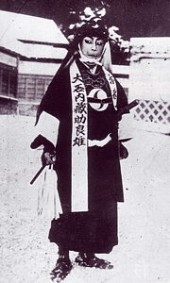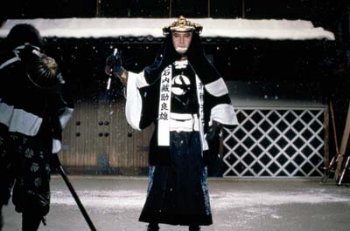
CHUSHINGURA GODANME (1907)
Stripped of its religious and family binding significance, Christmas has nevertheless become one of the most popular festivity imports in Japan in recent years. Japanese Christmas cake (no more than strawberry shortcake) now stands as the equivalent of the Christmas pudding and turron in the UK and Spain respectively. Whereas Christmas reunites families in the Christian world, here young couples take the occasion for a romantic outing to an expensive restaurant. Admittedly, Japan's winter holiday doesn't properly begin until the New Year, the so-called Oshogatsu festival, but this still shares some characteristics with the way that Christmas is lived in many countries. Thus, a visit to a local temple or staying at home with the family eating, drinking and watching TV are the main activities during this period. And just as the Christmas TV guide is filled with epic films with a historical and religious theme such as BEN-HUR or KING OF KINGS, The Story of Chushingura, also known as The Story of the 47 loyal Retainers, is a staple of Japanese TV channels throughout December and the New Year, rivalling in length with the Hollywood epics. Based on true events, Chushingura is one of the most popular and beloved tales in Japanese history, often described as a national epic, and seen as a tale of quintessential Japanese loyalty and endurance.
The story of Chushingura took place in 1701 when Lord Naganori Asano, in charge of a reception of envoys from Kyoto, but unfamiliar with the protocol, sought the advice of the elder Lord Kira. On the day of the reception, at Edo Castle, Asano drew his sword and wounded Kira, his motives still unknown. The feudal regime or shogunate sentenced Asano to commit seppuku, confiscated his lands and disbanded his clan. Almost two years later, Kuranosuke Oishi, Asano's high ranking samurai, led a group of forty-seven Asano's retainers, now ronin or masterless samurai, broke into Kira's mansion and executed him. The shogunate, though sympathetic to the loyalty shown to their master by the ronin, a keystone of feudal Japan, sensed the threat that their rebellious action posed to their authority, and sentenced them to commit seppuku, a rather honorable punishment for their illegal action.
